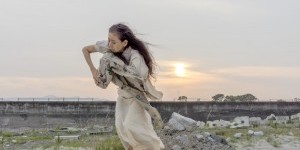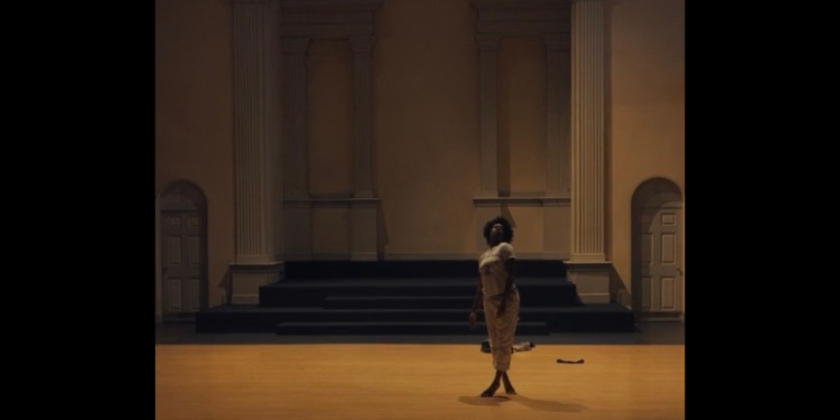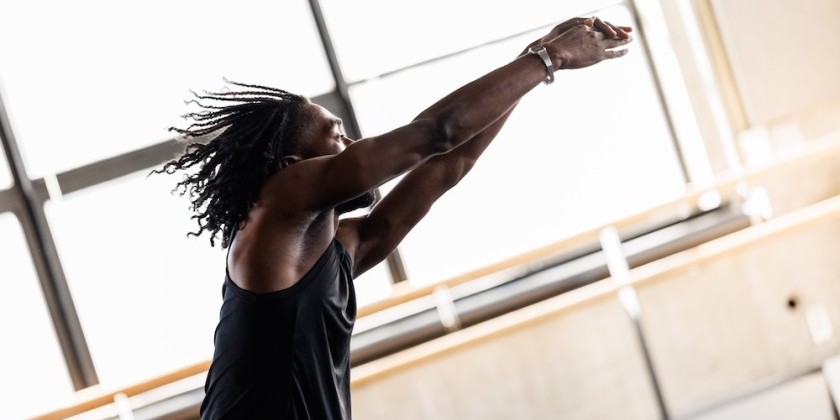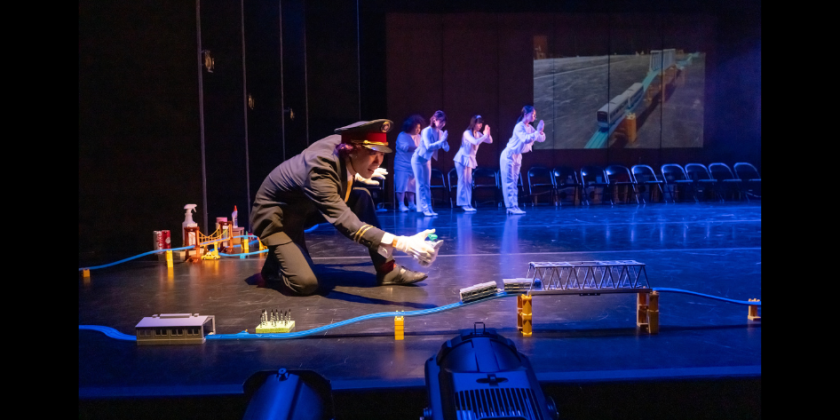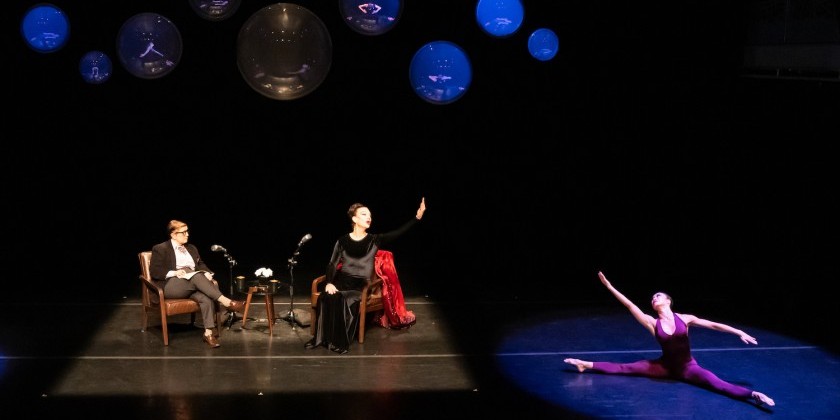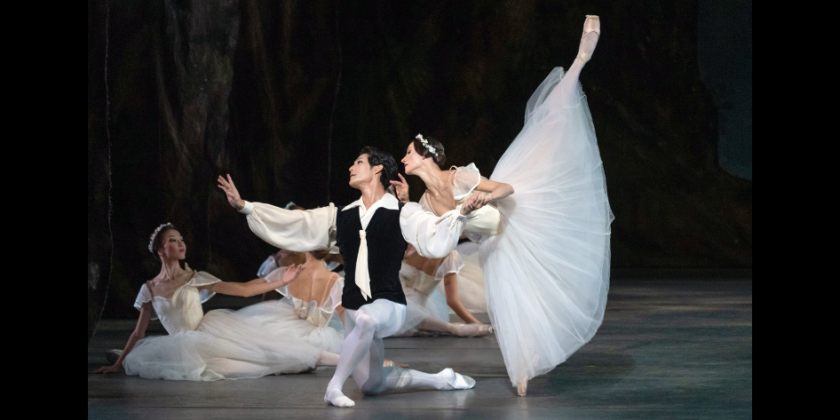Eiko Otake: A Body in Places - Part II
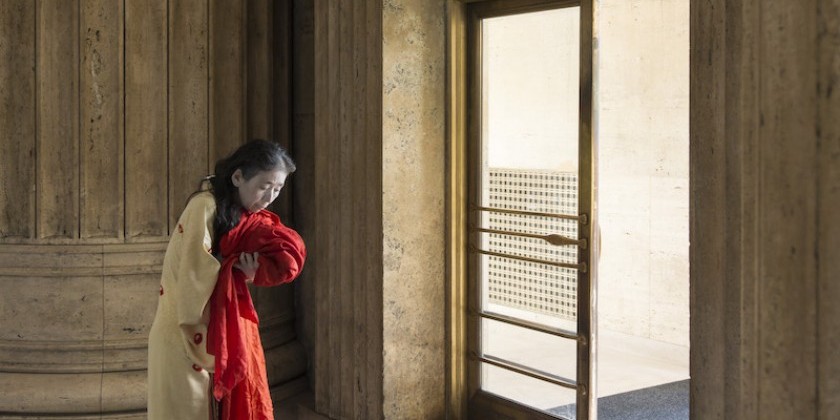
From Dashwood Books in the East Village to the Fukushima Prefecture in Japan
PLATFORM 2016: A Body in Places ran at Danspace Project and various locations in the city from February 29-March 23. To read part one, click here. Stayed tuned for parts three and four.
The themes of nakedness, desire, hesitation and urgency are essential to Eiko and Koma’s work and familiar to their long-time admirers. At the preview performance of Eiko’s solo program, A Body in Places, however, I detect a new theme: remorse. Before she scuttles around a corner at Dashwood Books, a shop in the East Village, and one of several informal locations where the Danspace Project is presenting her in February and March, Eiko turns her head to look back the way she has come. She is kneeling, moaning softly, and her red-rimmed eyes fill with sadness. In a moment like a brief culmination, she seems overcome by a rueful awareness of the past. This regret ties the solo in the bookstore to other performances in this series, which extends beyond this year’s Danspace Platform and has taken Eiko to locations around the globe.
Since she launched her exploration of the solo form in 2014 at the Arts Center on Governor’s Island, in New York, and with an installation that the Pennsylvania Academy of the Fine Arts presented at the 30th Street Station in Philadelphia, Eiko has taken A Body in Places to Santiago and Valparaiso, Chile; to Hong Kong; to Durham, North Carolina; and to Middletown, Connecticut. Though each of these places has been the scene of historical events that deserve commemoration, surely none of these locations has the terrifying significance of one place the dancer visited in preparation for her tour. That place is Fukushima Prefecture, in Japan, the site of a horrific nuclear accident that began following an earthquake and tsunami in 2011, leaving a wound in the earth that continues festering to this day.
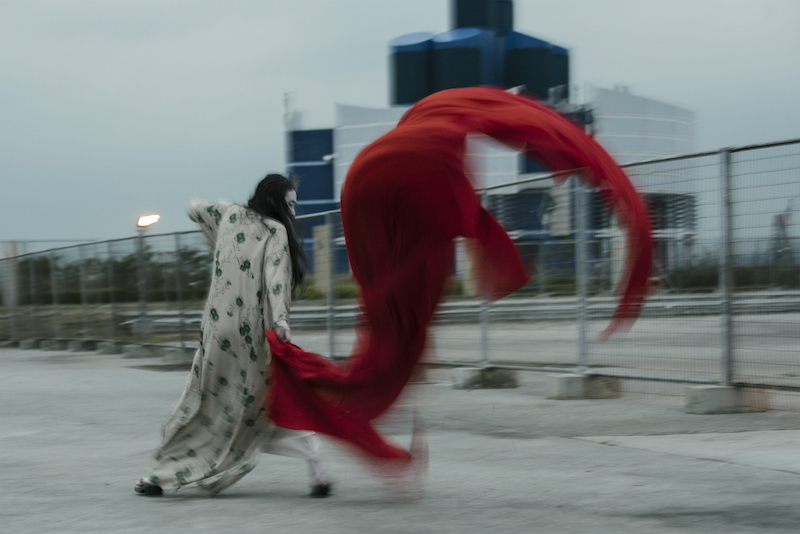
By breaching protective sea walls and destroying the emergency generators required to cool the Fukushima Daiichi nuclear plants, the tsunami caused the meltdown of three nuclear reactors and released widespread radioactive contamination. More than 100,000 people abandoned their homes and fled from areas that, despite subsequent clean-up attempts, remain uninhabitable to varying degrees. The cores of the three reactors that suffered meltdowns also remain inaccessible, so their current status can only be guessed at; while groundwater passing through this area carries radioactive toxins daily into the Pacific Ocean. The proposed solution to these problems involves constructing a frozen soil barrier around the plants; but barrier or no barrier, some areas affected by the disaster will not be safe to occupy for the foreseeable future. In a terrifying precedent, the city of Pripyat, Ukraine, the site of the 1986 Chernobyl nuclear plant explosion, has been declared uninhabitable for 20,000 years. Similarly the Fukushima disaster has created an all but perpetual crisis. Yet advocates of nuclear power continue to downplay its significance. “This is all greed,” Eiko opines. “It’s all about money.”
The dancer says she first visited Fukushima in August 2011, five months after the tragedy began. At that time, she had no thoughts of dancing there. She went, “just to see,” she says. “I’m the kind of person, I have to be there to see.” Two years later, when developing ideas for her solo project, she decided to return with photographer William Johnston, a professor of History and East Asian studies at Wesleyan University, where Eiko teaches an interdisciplinary class about the atomic bomb. They went to Fukushima twice, in January and July of 2014, spending a week each time; and Johnston photographed Eiko dancing with her red silk amid the ruins. “Going there to see is one thing, but going there to actually dance is a totally different thing,” she says. “I work on the floor as you know. So I’m barefoot, and with my skin totally exposed. It’s very dangerous for your body. It’s not a good thing to do.” Eiko admits that if she were younger — she’s now 64 — she would not have gone. She only took a Geiger counter on her last visit, and she does not know how much radiation she has been exposed to or what its ultimate effects may be. Yet in this place devoid of human life, she says she discovered the true meaning of solitude and a cautionary example of the risk of human failure. “It’s so desolate,” Eiko says. “It’s so clearly a demonstration that we fail. Humans fail.
“I wasn’t even crying,” she adds. “It’s like I wailed.”
“My emotion was really both anger and remorse. I felt responsible,” she continues. After all, she says, the probability of such an accident occurring in Japan has always been high. Nuclear technology can only exist “by neglecting the science of probability,” she says. “And the science of probability is a science, right? Corporations try to ignore this by saying, ‘Oh, this was unexpected.’ No! Totally expected! Japan has more earthquakes than any other country. It’s an island. Put an earthquake and water together and it’s a tsunami. So that’s why I feel remorseful, because we all knew this. But although, if somebody asked me, I was always very clear I was against it, I didn’t particularly get involved in nuclear plant issues. I was involved more in atomic bomb issues.” The Fukushima disaster, Eiko says, filled her with regret because despite her engagement with nuclear issues over the years, she and Koma have been largely preoccupied with their own art making. “Why was I not more involved?” she says she asks herself now.
Share Your Audience Review. Your Words Are Valuable to Dance.
Are you going to see this show, or have you seen it? Share "your" review here on The Dance Enthusiast. Your words are valuable. They help artists, educate audiences, and support the dance field in general. There is no need to be a professional critic. Just click through to our Audience Review Section and you will have the option to write free-form, or answer our helpful Enthusiast Review Questionnaire, or if you feel creative, even write a haiku review. So join the conversation.




